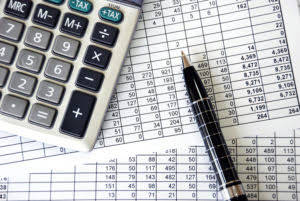Content

Without understanding these costs, you can’t understand which product/service is most profitable. Once you understand this, you can know where you should be focusing most of your attention. Alternatively, a company’s VCs can also be calculated by multiplying the cost per unit by the total number of units produced. Variable costs, or “variable expenses”, are connected to a company’s production volume, i.e. the relationship between these costs and production output is directly linked. The variable cost ratio allows businesses to pinpoint the relationship between variable costs and net sales. Calculating this ratio helps them account for both the increasing revenue as well as increasing production costs, so that the company can continue to grow at a steady pace.
- Furthermore, the total cost curve will also increase according to the total variable cost curve.
- You might pay to package and ship your product by the unit, and therefore more or fewer shipped units will cause these costs to vary.
- And as we’ve already established, cutting variable costs (i.e. outsourcing, replacing parts, optimizing processes) is much easier than cutting fixed costs.
- Depending on the type of business you run, you may have fixed or variable costs that could impact a monumental decision, such as adding new products or closing the doors to a business.
- Or, the company can acquire a supplier and integrate it into its existing business.
- You should also be aware of how many units you need to sell if you want to break even and become profitable.
These can include parts, cloth, and even food ingredients required to make your final product. To see our product designed specifically for your country, please visit the United States site. For this example, Company X will base their calculations on a week’s production.
Products
For each additional product you produce, you’ll need to add another $5 to your total variable cost. You can figure out your new total variable cost by multiplying the average variable cost by the number of units you plan to produce. You can even input different numbers to see your total variable cost with 2,000 units, 5,000 units, 10,000 units, and so on. While online calculators can be a big help when you’re just starting a business, it’s important to understand how to calculate variable costs and how the formula works.

On the other hand, variable costs are safer, generate less leverage, and leave the company with smaller upside potential. When the manufacturing line turns on equipment and ramps up product, it begins to consume energy. When its time to wrap up product and shut everything down, utilities How Much Do Bookkeeping Services for Small Businesses Cost? are often no longer consumed. As a company strives to produce more output, it is likely this additional effort will require additional power or energy, resulting in increased variable utility costs. Variable costs aren’t a “problem,” though — they’re more of a necessary evil.
Average Variable Cost
These costs are entirely dependent on the organization’s volume of production and will vary based on the amount a company is able to produce. So, if the company produces more or less, the cost will increase or decrease proportionally. For example, Uber pays its drivers for every single ride they complete.
- Examples of variable costs are sales commissions, direct labor costs, cost of raw materials used in production, and utility costs.
- Also, read the importance of WPI and the difference between WPI and CPI.
- You can use a break-even analysis to figure out at what point you’ll become profitable.
- For example, every car that is produced must have a set of four tires.
- If the price they receive for the product is higher than the AVC, it is one indicator of a profitable product.
- This process takes time, labor, materials, and essential production equipment.
For example, renting an office space would be considered a fixed cost, as it will not be affected by how many units of your product you make. The cost of the raw materials needed to make your product, on the other hand, will definitely depend on how many units you make. It’s important to consider both fixed and variable costs when it comes to pricing strategy. You need to price your products so that your company is turning a profit, and you can’t do that just by looking at your variable costs. Some examples of fixed costs include lease and rental payments, insurance, salaries, utility bills, and loan repayments.
Top 10 Shopify Themes With Product Videos [Free and Paid]
The average VC — also known as the “variable cost per unit” — equals the total VCs incurred by a company divided by the total output (i.e. the number of units produced). Variable costs are a direct input in the calculation of contribution margin, the amount of https://adprun.net/accounting-information-for-retail-businesses-a/ proceeds a company collects after using sale proceeds to cover variable costs. Every dollar of contribution margin goes directly to paying for fixed costs; once all fixed costs have been paid for, every dollar of contribution margin contributes to profit.